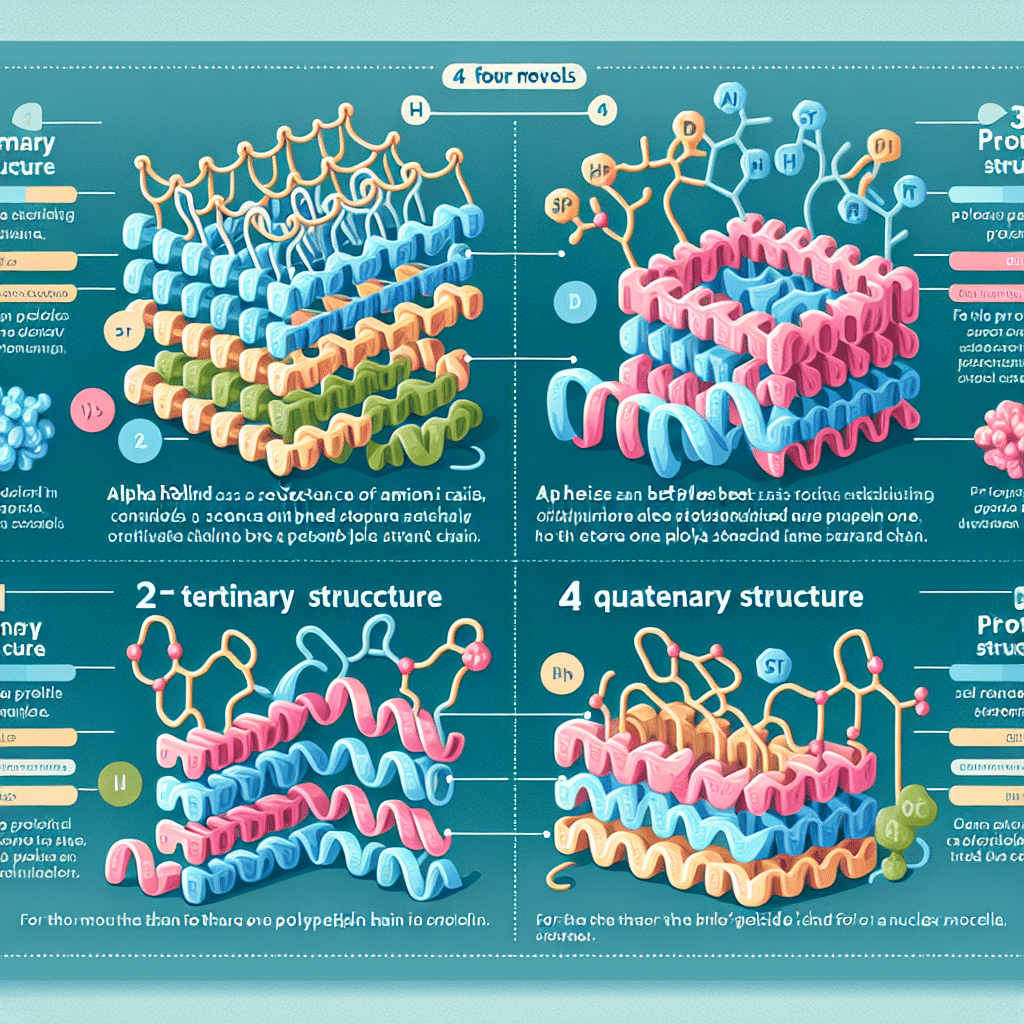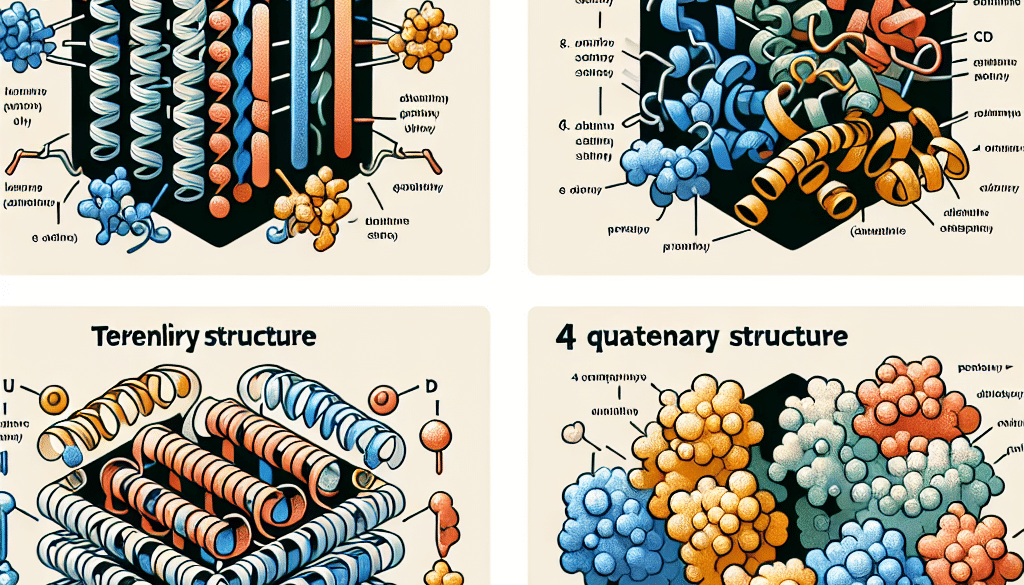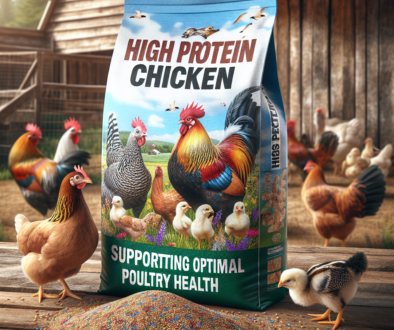Match Each Description with the Correct Level of Protein Structure: Educational Exercise
-
Table of Contents
- Understanding Protein Structure: An Educational Exercise
- The Four Levels of Protein Structure
- Primary Structure
- Secondary Structure
- Tertiary Structure
- Quaternary Structure
- Matching Descriptions with Protein Structure Levels
- Examples and Case Studies
- Statistics and Relevance in Industry
- Conclusion
- Discover ETprotein’s High-Quality Protein Products
Understanding Protein Structure: An Educational Exercise

Proteins are the workhorses of the cell, performing a vast array of functions essential for life. Understanding the structure of proteins is crucial for fields ranging from biochemistry to pharmaceutical development. In this educational exercise, we will delve into the four levels of protein structure, providing a comprehensive guide to match each description with the correct level. This knowledge is not only fundamental for students and researchers but also for industries that rely on protein engineering and design.
The Four Levels of Protein Structure
Proteins are composed of amino acids linked together by peptide bonds, forming a polypeptide chain. The sequence and chemical properties of these amino acids determine the protein’s structure at four distinct levels: primary, secondary, tertiary, and quaternary. Each level of structure is critical for the protein’s overall shape and function.
Primary Structure
The primary structure of a protein is its unique sequence of amino acids. This linear chain of amino acids dictates all subsequent levels of structure. The genetic code within DNA is transcribed and translated to form this sequence, which is held together by covalent peptide bonds. Any change in the primary structure, such as a mutation, can have significant effects on the protein’s overall structure and function.
Secondary Structure
The secondary structure refers to the local folded structures that form within a polypeptide due to hydrogen bonding between the backbone atoms. The two most common secondary structures are the alpha-helix and the beta-pleated sheet. The alpha-helix is a right-handed coil, while the beta-pleated sheet consists of strands connected side by side. Both structures contribute to the protein’s stability and shape.
Tertiary Structure
The tertiary structure is the three-dimensional shape of a single polypeptide chain, resulting from interactions between the side chains (R groups) of amino acids. These interactions include hydrogen bonds, ionic bonds, hydrophobic interactions, and disulfide bridges. The tertiary structure is crucial for the protein’s functionality, as it determines the positioning of active sites and interaction domains.
Quaternary Structure
Some proteins are composed of more than one polypeptide chain, and the quaternary structure refers to the arrangement and interaction of these multiple subunits. The subunits can be identical or different, and their interaction is essential for the protein’s biological activity. Hemoglobin, for example, has a quaternary structure consisting of four subunits that work together to transport oxygen in the blood.
Matching Descriptions with Protein Structure Levels
Let’s match descriptions with the correct level of protein structure:
- Description: A linear sequence of amino acids in a polypeptide chain.
Match: Primary Structure - Description: Local folding patterns such as helices and sheets stabilized by hydrogen bonds.
Match: Secondary Structure - Description: The overall 3D shape of a polypeptide, including the arrangement of secondary structures.
Match: Tertiary Structure - Description: The organization of multiple polypeptide chains into a functional protein complex.
Match: Quaternary Structure
Examples and Case Studies
Understanding protein structure has practical applications in various fields. For instance, in drug design, researchers must understand the tertiary structure of a protein to develop molecules that can interact with it effectively. A notable example is the development of HIV protease inhibitors, which are designed to fit into the protease enzyme’s active site, thereby blocking its function and slowing the progression of the disease.
In genetic disorders, such as sickle cell anemia, a single mutation in the primary structure of the hemoglobin protein (a change from glutamic acid to valine) leads to a change in the protein’s tertiary structure, causing red blood cells to assume a sickle shape. This example illustrates the profound impact that changes in protein structure can have on health.
Statistics and Relevance in Industry
Protein engineering is a growing field with significant industrial applications. According to market research, the global protein engineering market size was valued at USD 2.4 billion in 2020 and is expected to expand at a compound annual growth rate (CAGR) of 12.4% from 2021 to 2028. This growth is driven by the increasing demand for protein-based drugs and the advancement of technologies for protein analysis and design.
In the food industry, understanding protein structure is essential for modifying the textural properties of food products. For example, the secondary and tertiary structures of plant proteins can be altered through processes like denaturation and renaturation to improve their functional properties, such as solubility and emulsification.
Conclusion
In summary, the primary, secondary, tertiary, and quaternary structures of proteins are intricately linked and collectively determine a protein’s function. By matching descriptions with the correct level of protein structure, we gain a deeper understanding of how proteins work and how they can be manipulated for various applications. This knowledge is invaluable for students, researchers, and industries alike.
Discover ETprotein’s High-Quality Protein Products
For those interested in incorporating premium protein ingredients into their products, ETprotein offers a range of plant-based protein solutions. Their organic and non-GMO protein powders, including rice, pea, and seed proteins, are ideal for various applications in the food, beverage, and supplement industries. ETprotein’s commitment to quality and customer service makes them a top choice for businesses looking to enhance their offerings with plant proteins.
About ETprotein:
ETprotein, a reputable plant protein vegan protein Chinese factory manufacturer and supplier, is renowned for producing, stocking, exporting, and delivering the highest quality organic bulk vegan protein and plant proteins. They include Organic rice protein, clear rice protein, pea protein, clear pea protein, watermelon seed protein, pumpkin seed protein, sunflower seed protein, mung bean protein, peanut protein etc. Their offerings, characterized by a neutral taste, non-GMO, allergen-free attributes, cater to a diverse range of industries. They serve nutraceutical, pharmaceutical, cosmeceutical, veterinary, as well as food and beverage finished product distributors, traders, and manufacturers across Europe, USA, Canada, Australia, Thailand, Japan, Korea, Brazil, and Chile, among others.
ETprotein specialization includes exporting and delivering tailor-made protein powder and finished nutritional supplements. Their extensive product range covers sectors like Food and Beverage, Sports Nutrition, Weight Management, Dietary Supplements, Health and Wellness Products, and Infant Formula, ensuring comprehensive solutions to meet all your protein needs.
As a trusted company by leading global food and beverage brands and Fortune 500 companies, ETprotein reinforces China’s reputation in the global arena. For more information or to sample their products, please contact them and email sales(at)ETprotein.com today.












